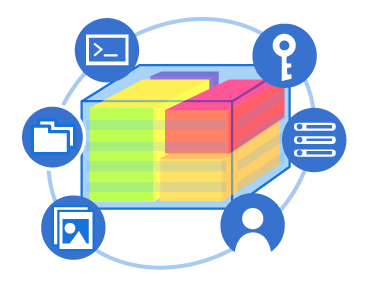You’ve heard about containers, but why do they matter? How can they improve your technical performance?
We’ve got you covered in this “Containers 101” introduction. You’ll find out how containers increase reliability and productivity, so you can scale your business.
Paste this Image on Your Site!
Simply copy and paste the code below and you can share this infographic on your site:
What Are Software Containers?
Software containers function in a similar way to how the transportation industry uses shipping containers. They’re standardized holding units, and in both cases, using containers is an easy and structured way to store units of content.
How Are Containers Being Used?
Previously, to get this type of segregated storage, virtual machines were used. They were the best way to run independent and isolated applications on a server. Although it was a cost-efficient method, the nature of virtual machines meant that both the app itself and an operating system had to exist on each virtual machine. The problem is that stacking a virtual machine’s OS on top of a server’s OS does not optimize for speed.
In contrast, containers only hold the application and any libraries/frameworks that it depends on. Because there’s no stacking of operating systems, the containers stay small and efficient.
Why Are Containers Suddenly a Big Deal?
Containers have been available on Linux for over a decade, but in 2013, Docker made them much easier to use. This increased accessibility has promoted more widespread adoption of the technology, and it’s being used on a massive scale.
Fast-growth companies such as Netflix have used containers to improve their back ends. Netflix’s platform architect, Yunong Xiao, found that by implementing containers for the data access service for its 80 million subscribers, the company would be “more productive, save money, offer a more reliable service and make better use of staff skills.”
How Businesses Are Using Containers
Containers are widely used in many major tech companies. For example, each week, Google starts over two billion containers to run Gmail, YouTube, search, and more.
Containers have been widely used for development and testing with Cluster HQ reporting that 73% of enterprises are using them in this way. Additionally, 39% of companies use containers in a production environment, and 65% plan to use containers for production in the next 12 months.
And, while containerization is typically behind the scenes, it’s starting to become a consumer-facing tool as with Mozilla’s Facebook Container Extensions, a platform that contains and isolates Facebook accounts from other Web activity, making it harder for Facebook’s trackers to gather user data.
5 Ways Containers Can Improve Your Technical Performance
The benefits to using containers can be far reaching, including increased worker productivity and more. Let’s look at the five ways that containers can improve your technical performance:
- Faster Software Development: When using containers, single apps can be broken down into smaller modular containers. This means that teams can work independently on each unit simultaneously. So, for example, if your software development team were to build a car, containerization would mean that teams could simultaneously and independently work on a component to make the engine spark and a component to make the wheels turn. This means a faster development environment.
- Beneficial Testing Environment: Not only does containerization make development faster, but it also creates a better testing environment. When each unit is isolated in a container, a failure in one container module won’t crash the entire application. In this scenario, testing and experimentation in one sector of the app won’t affect other components, as long as the app’s overall framework is preserved.
- Cross-Platform Reliability: A major advantage of containerizing is that it makes the app independent of its OS and system infrastructure. Therefore, developers can run their software no matter where it’s deployed. With a container providing a self-contained unit for the app and all of its dependencies, “differences in OS distributions and underlying infrastructure are abstracted away,” explains CIO.
- Stretching Your Budget With More Efficient Storage: Containers can also help you be more efficient with your data storage. Whereas an app on a virtual machine can use several gigabytes of storage, an app in a container would only need tens of megabytes.
- Faster Boot Times Reduce Computing Overhead: Launching an app on a virtual machine can take several minutes, but a containerized app is launched almost instantly. When apps are able to initiate containers on-demand and shut them down when they’re no longer needed, the overall computing load is greatly reduced.
How Avatier Uses Containers
Now that you know why containers are so great, you’ll understand why we’re excited about Avatier’s Identity-as-a-Container (IDaaC) Platform. It combines the best parts of traditional IAM (identity and access management tools) and IDaaS (Identity-as-a-Service subscription).
Identity AnywhereTM is a hyper-scalable, high-security, flexible solution for deploying an identity management solution for your business.





